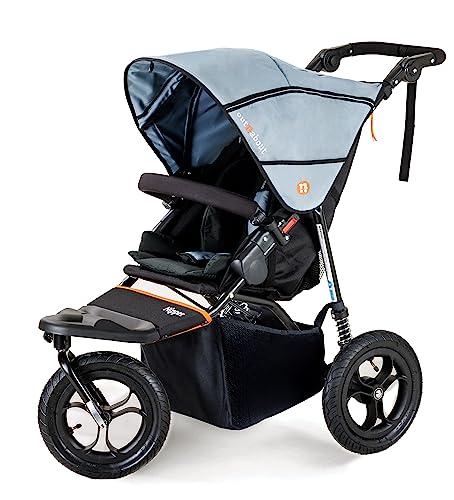Prams and Pushchairs: A Comprehensive Guide for New Parents
Navigating parenthood involves a wide range of choices, one of the most considerable being the choice of an ideal pram or pushchair. These important products function as a sanctuary for babies and a means of transportation for caregivers. Whether strolling through the park or running errands, a good pram or pushchair can enhance the experience for both moms and dad and child. This short article supplies an extensive look at the types of prams and pushchairs offered, their functions, and vital factors to consider to make before acquiring one.
Comprehending Prams and Pushchairs
While the terms "pram" and "pushchair" are frequently utilized interchangeably, they refer to slightly various items. Understanding the difference can assist in making an informed option.
| Term | Description |
|---|---|
| Pram | Normally created for babies, prams have a completely flat structure, enabling the baby to lie down easily. They frequently include a carrycot and appropriate for newborns approximately about 6 months old. |
| Pushchair | Developed for older babies and toddlers, pushchairs often have a more upright seating position. They are versatile and can generally be reclined or adapted to accommodate the child's growth, starting from around 6 months and reaching preschool age. |
Kinds of Prams and Pushchairs
When picking a pram or pushchair, different styles will deal with various parenting needs and way of lives. Here are the primary types available on the marketplace:
Traditional Prams
- Traditional, classic designs with a sturdy carrycot.
- Ideal for newborns.
- Generally bulkier, appropriate for leisurely walks.
- Light-weight and typically foldable, ideal for travel and quick trips.
- Can be front-facing or rear-facing.
- Include features like adjustable handlebars and reclining seats.
Travel Systems
- A combination of a cars and truck seat and a pushchair.
- Practical for car-to-pushchair transitions without disturbing the baby.
- Generally more expensive but worth considering for their multifunctionality.
Multi-Functional Strollers
- Deal numerous setups, permitting a carrycot, sit-up seat, or safety seat attachment.
- Versatile as per the child's growth and altering requirements.
- Can often be used for several kids with accessories.
Light-weight Strollers
- Ultra-portable, ideal for parents on the go.
- Easy to fold and bring.
- Normally recommended for older babies or toddlers.
Secret Features to Consider
When choosing the best pram or pushchair, a few crucial functions need to be considered:
Safety Features
- Try to find a five-point harness system to protect the child.
- Designs with braking systems that are simple to operate with the foot deal added security.
Weight and Size
- Think about how much weight the caretaker can manage, and the storage area available.
- A light-weight model might supply easier maneuverability, while a bulkier model may use much better stability and sturdiness.
Durability and Material
- A frame made from high-quality materials ensures durability.
- Weather-resistant materials can supply comfort and ease of cleansing.
Relieve of Folding
- Designs that can be folded quickly and easily are typically favored, particularly for parents who need to use public transport or have restricted storage space.
Handling and Comfort
- Adjustable manages can accommodate various heights, guaranteeing a comfortable push for all caregivers.
- Excellent suspension is necessary for smoother trips on irregular surface areas.
Getting ready for the Purchase
Before buying, it's suggested to carry out comprehensive research study. The following actions will help new moms and dads make a notified choice:
Define Your Needs
- Consider lifestyle aspects such as travel frequency, urban vs. suburban living, and storage space.
Budgeting
- Prams and pushchairs vary considerably in rate. Set an affordable spending plan, remembering security and quality.
Test Drive
- Whenever possible, test the pram or pushchair. Take note of weight, maneuverability, and general comfort.
Moms And Dad and Baby Reviews
- Search for feedback from other parents who have used the product. This can provide insights into real-world efficiency.
Examine for Warranty
- An excellent service warranty can secure your financial investment and ensure durability.
Frequently asked questions
Q1: At what age can a baby use a pushchair?Typically, babies can
start using a pushchair around six months when they can hold their head up independently. Prior to that, a pram or carrycot is advised. Q2: Are travel systems worth the investment?Yes, travel systems can offer excellent value for moms and dads who require a smooth shift in between the
vehicle and stroller. They supply benefit and versatility, especially for households who regularly travel. Q3: How long can you utilize a pushchair?Most pushchairs can be utilized till a kid is around 3 to 4 years old, though some models offer features for bigger kids. Q4: Do I need a brand-new pram or pushchair for each child?If your existing model is in great condition and fulfills security standards, there may be no need for a new one. However, think about factors like wear and tear, hygiene, and developing requirements. Picking the right pram or pushchair is a crucial choice for any brand-new parent. With a range of styles, types, and features readily available, moms and dads can find a design that suits their needs, lifestyle, and budget.
By looking into and comprehending the distinctions in between prams and pushchairs, parents can make a confident and informed choice that will provide the most safe, most convenient experience for their child. As they start this exciting journey of being a parent, having the best transportation alternative can truly improve the adventure of raising a child.

